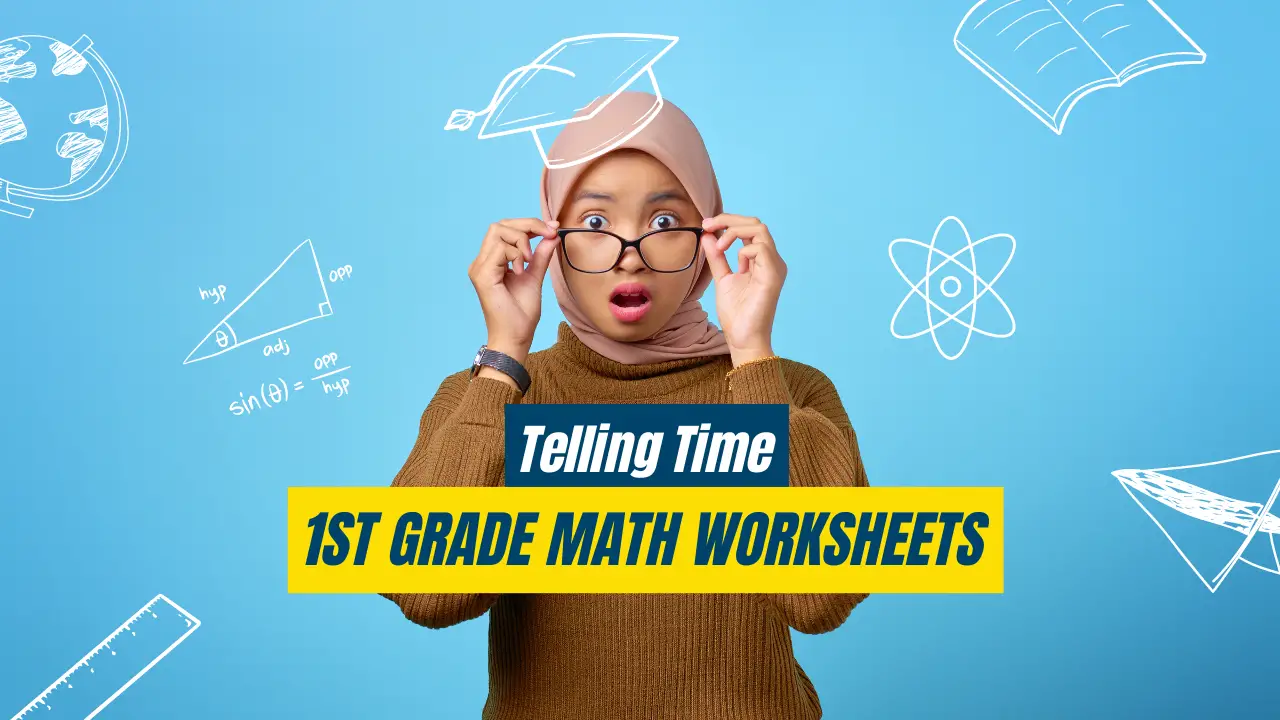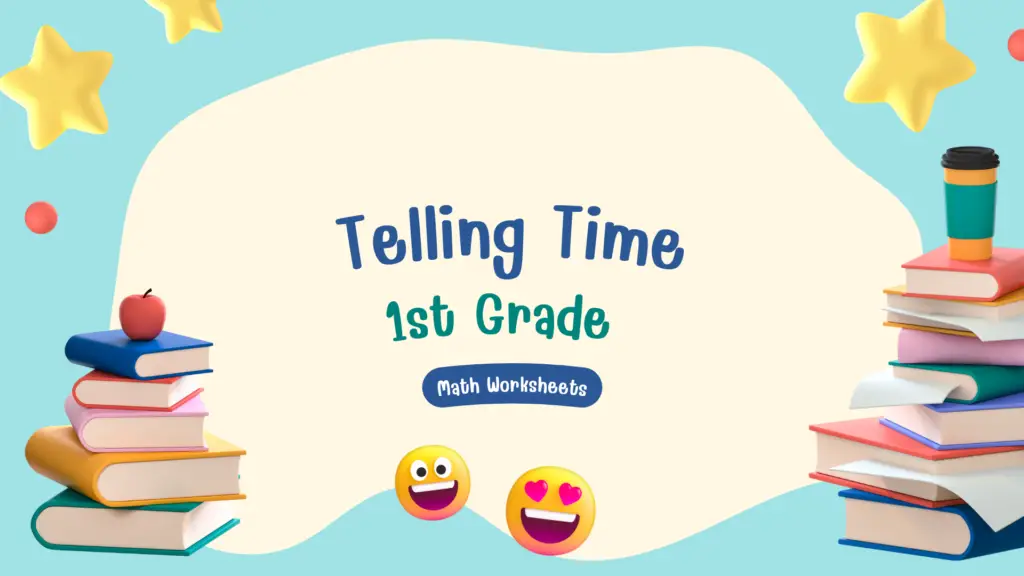
Table of Contents
Introduction to Telling Time for 1st Graders
Understanding how to tell time is an essential skill for young learners. Our 1st grade math worksheets are designed to introduce students to the concept of time using a 12-hour clock. These worksheets provide plenty of practice to help students become comfortable with reading analog clocks and understanding different units of time. Below, you’ll find a breakdown of the key areas covered in our telling time worksheets.
Concepts of Time
Before students can accurately tell time, it’s important for them to grasp the basic units of time:
- Units of Time (seconds, minutes, hours, days): This section introduces students to the various units of time, helping them understand how these units relate to one another. For example, how many seconds are in a minute, or how many hours make up a day.
- Fast or Slow? Students learn to compare speeds, determining whether activities or objects are fast or slow. This concept helps them connect the abstract idea of time to real-world experiences.
- Morning, Afternoon, or Night? Here, students practice identifying times of the day, learning to associate activities with different parts of the day.
Telling Time
The heart of our 1st grade time worksheets focuses on telling time. This section covers:
- Tell the Time – Whole Hours: Students practice reading clocks to tell the time to the nearest hour.
- Draw the Time on the Clock Face (Whole Hours): After learning to read the time, students then draw the corresponding time on a blank clock face.
- Tell the Time – Half Hours: Moving on from whole hours, students learn to read times that are on the half-hour mark.
- Draw the Time on the Clock Face (Half Hours): Similar to whole hours, students practice drawing times that are on the half-hour.
- Tell the Time – Quarter Hours: Finally, students are introduced to telling time at quarter-hour intervals, rounding out their basic time-telling skills.
- Draw the Time on the Clock Face (Quarter Hours): This reinforces their understanding by having them visually represent quarter-hour times.
Elapsed Time
Understanding how time passes is just as important as telling the time. These worksheets help students calculate elapsed time:
- What Time Will It Be in 1 Hour? Students practice adding one hour to a given time, helping them understand the passage of time.
- What Time Will It Be in X Hours? This extends the previous concept by varying the number of hours students add to the current time.
Calendar
In addition to telling time, students also learn about the days of the week and months of the year:
- Days of the Week: Exercises help students memorize and order the days of the week.
- Months of the Year: Similar to the days of the week, these worksheets focus on teaching students the months in order.
Time Word Problems
To ensure that students can apply their time-telling skills in real-world contexts, our worksheets include:
- Time & Elapsed Time Word Problems: These problems challenge students to use their knowledge to solve practical problems involving time.
1st grade telling time worksheets

Telling time is a fundamental skill that lays the groundwork for many aspects of everyday life. Our 1st grade telling time worksheets provide a comprehensive approach to learning time, ensuring that students not only understand how to read clocks but also how to apply their knowledge to real-world situations. With these exercises, young learners will gain confidence in their ability to tell time and understand the concept of elapsed time.







Your blog is a constant source of inspiration for me. Your passion for your subject matter is palpable, and it’s clear that you pour your heart and soul into every post. Keep up the incredible work!